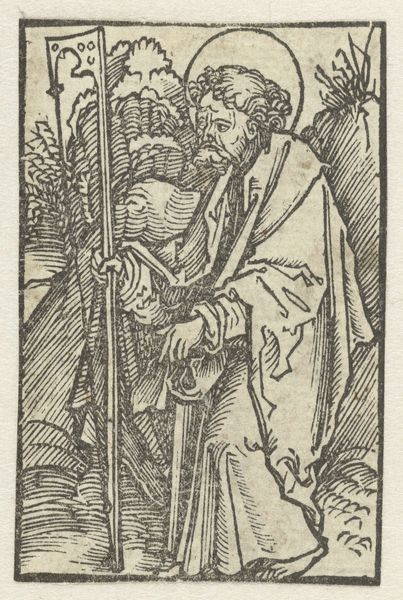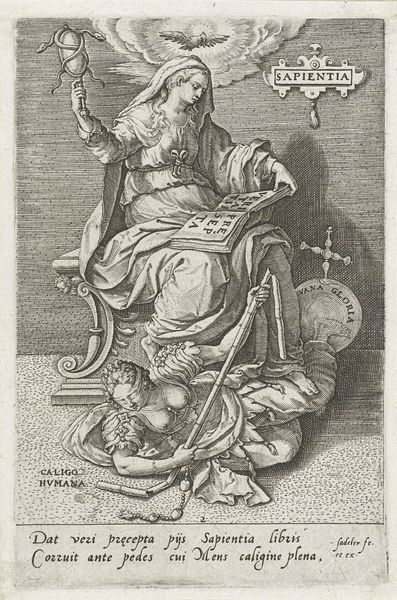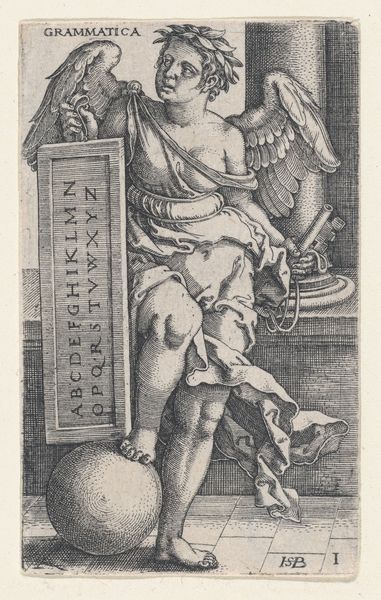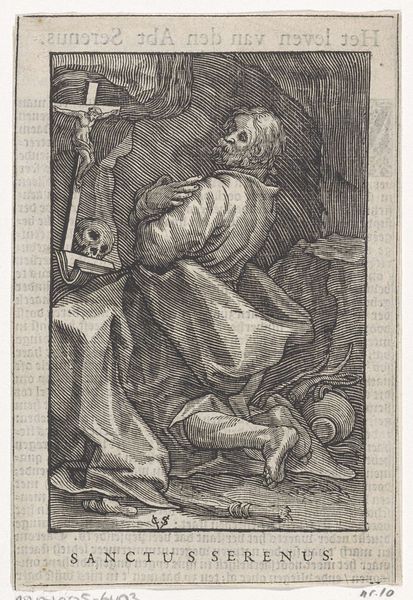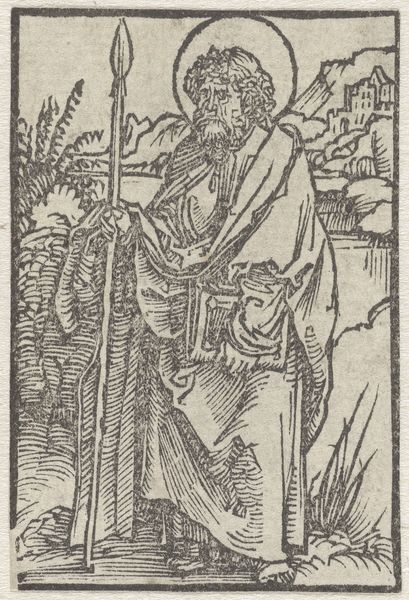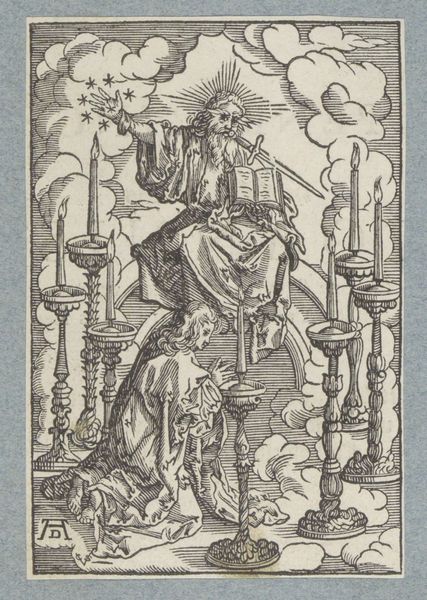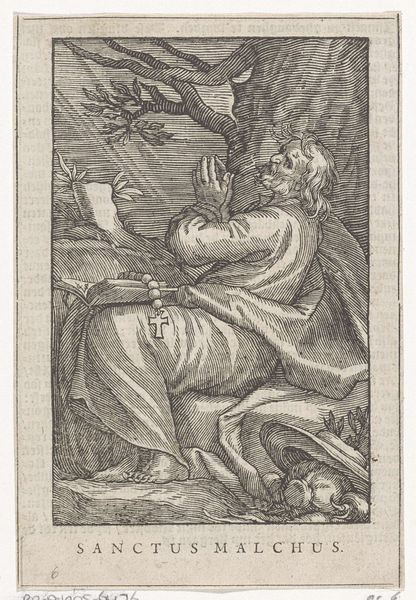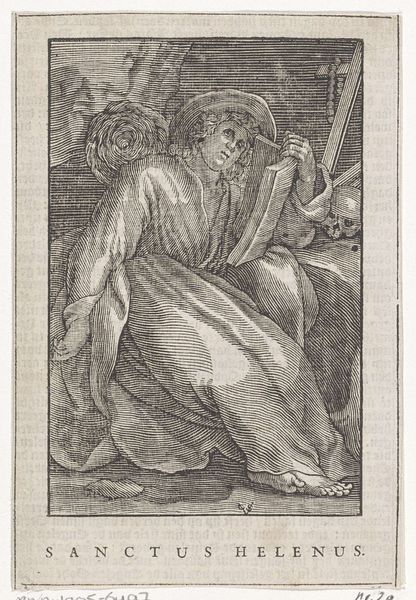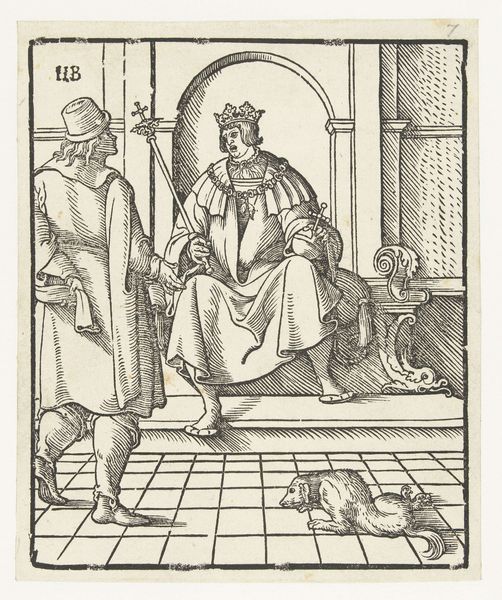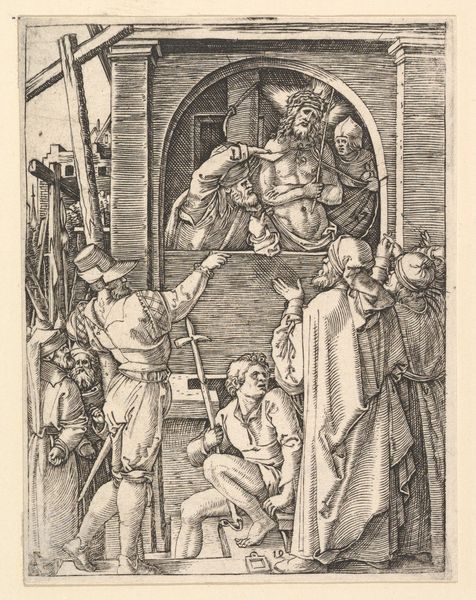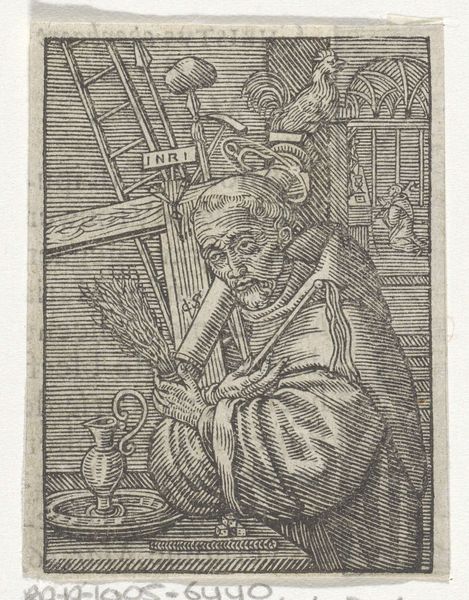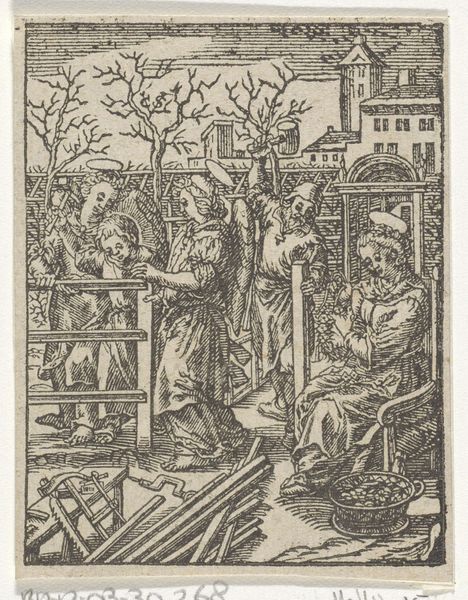
Zittende Romein met een zwaard, een hoorn en een bord met 'Provincia Palestina. M.D. XXXVI' 1550 - 1552
0:00
0:00
drawing, print, paper, ink, woodcut, engraving
#
drawing
#
allegory
# print
#
pen illustration
#
mannerism
#
figuration
#
paper
#
ink
#
woodcut
#
history-painting
#
engraving
Dimensions: height 222 mm, width 149 mm
Copyright: Rijks Museum: Open Domain
Editor: This print, "Zittende Romein met een zwaard, een hoorn en een bord met 'Provincia Palestina. M.D. XXXVI'" by Monogrammist SC, dates from around 1550-1552, using woodcut, engraving, and ink on paper. I’m struck by the figure’s expression—he seems burdened. What do you make of this image, considering its historical context? Curator: It's crucial to understand this print within the visual culture of the mid-16th century. Prints were powerful tools for disseminating ideas, especially religious and political allegories. The figure’s weary pose and the "Provincia Palestina" banner invite us to consider the social and political tensions surrounding the concept of Palestine in that era. Note the contrast: Roman attire mixed with this banner of subjugation. Does that resonate with contemporary colonial or power dynamics for you? Editor: Absolutely. I see the weight of Roman power, but with "Palestina" marked as a subjugated province. It's a statement on occupation. I’m curious about the sword and cornucopia—are they standard symbols? Curator: Yes, the sword traditionally represents military strength and control. The cornucopia, however, is a symbol of plenty and prosperity. Placing them together suggests that the Roman authority ensures wealth, but it is a wealth gained through dominance. Also consider how printed images at the time, regardless of intention, became a medium for solidifying power. Who commissioned and consumed such images tells us even more about its historical impact. Editor: That tension between the sword and cornucopia speaks volumes about how power operates. I hadn't considered how prints themselves could become tools of power too. Curator: Exactly. Reflecting on its place in society then, it’s impossible to ignore the parallels that continue to echo throughout history and into our modern society. It allows us to engage in a wider commentary around colonization, representation and power. Editor: This really does broaden my view. Seeing how an image from so long ago can still speak to issues of power today—it makes me rethink the role of art in political discourse. Curator: It is this interplay between the artist's era and our own understanding that brings old images to life!
Comments
No comments
Be the first to comment and join the conversation on the ultimate creative platform.
